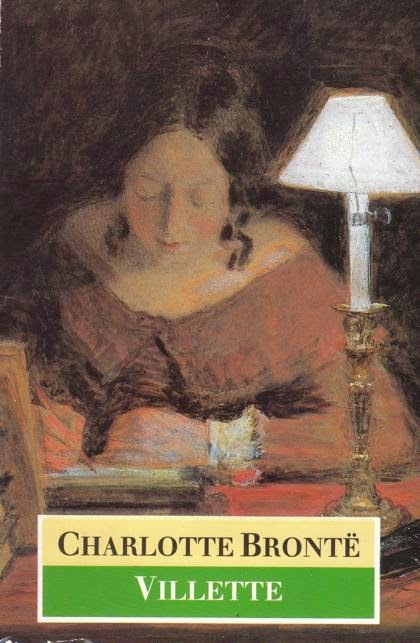How great a sacrifice should we make for love? The title character in Hrishikesh Mukherjee's Anuradha (1960) is a woman who was once a famous singer and dancer. But as the film begins, Anuradha (Leela Naidu) has been out of the public's awareness for 10 years. During that time she has been married to a doctor, Nirmal (Balraj Sahni); they have an adorable young daughter, Ranu, who often accompanies him on his rounds:
Nirmal is idealistic and highly dedicated, and he has moved the family to a rural village so that he can provide medical care for its impoverished inhabitants. Of course, this means that he can barely provide for his own family.
Anuradha's days are spent in the domestic drudgery of cooking and cleaning; her nights are spent in the loneliness of waiting for her husband to return from his endless round of patients.
Nirmal has devoted his life to the care of the villagers, but he has neglected the needs of his own wife.
The film is structured as a series of flashbacks of the couple's courtship. We learn that they met through her brother and fell in love as Nirmal treated her for a sprained ankle. Nirmal is attracted by Anuradha's beauty and talent; she is attracted by his kindness, humor, and selfless ideals.
Nirmal is committed to working in the village because his own mother died there for lack of a local doctor. But he recognizes that his work in the countryside will be incompatible with Anuradha's stage and recording career in the great metropolis:
The love-struck Anuradha dismisses his misgivings:
Anuradha's father (Hari Shivdasani) has his own plans for her. He has long wished to marry her to his closest friend's son, Deepak (Abhi Bhattacharya), just returned from studying overseas. Of course, Anuradha's father hasn't bothered to consult with her; she learns of it when she overhears him talking to Deepak:
Anuradha has to break the news to Deepak that she's in love with someone else. Considering that his engagement has been made and then broken over the space of five minutes, Deepak takes it well. He's clearly a decent guy: he offers to tell Anuradha's father that he is the one rejecting the match, to spare her from her father's anger (she won't let him). But Deepak has a question for her:
Alas, this is a question whose answer will only become apparent over time. Ten years on, despite her lovely daughter and her caring but preoccupied husband, Anuradha has come to feel trapped in her marriage:
Things are brought to a crisis by the return of two figures from the past. The first is Anuradha's father. At the time of her marriage to Nirmal he disowned his daughter for her disobedience. Now, chastened, he comes to the village to reconcile with the couple and meet the granddaughter he has never seen. But he can't resist asking his own question of Anuradha:
Anuradha replies "Happiness," but without convincing either her father or herself.
The second person to return from the past is Deepak. We see him travelling in a car driven by Seema, a woman who wants to marry him but doesn't understand why he's still carrying a torch for a past love. In fact, she's distracted by arguing about this when a child darts out into the road in front of them. To avoid him Seema swerves the car off the road and into a tree. By filmi coincidence, they happen to have been passing Anuradha's village, and Nirmal is called to treat the injured couple.
Deepak is not seriously hurt, and Nirmal has him carried to his own house for treatment. When Anuradha sees Deepak, a certain tenderness is reawakened:
And when Nirmal discovers that Anuradha and Deepak know one another, he insists that Deepak remain in his house as a guest. As a guest, Deepak requests the privilege of hearing Anuradha sing—which begins to reawaken other long-buried feelings in her:
The music is by Ravi Shankar, with lyrics by Shailendra; Leela Naidu's playback singer is Lata Mangeshkar.
Deepak is dismayed to discover Anuradha's neglect of her music, and Nirmal's neglect of her. He urges her to leave Nirmal:
Anuradha is torn. She loves her husband, but has obviously suppressed a huge part of herself to become a wife and mother in this remote location. Worst of all, Nirmal seems to take her for granted; she even has to remind him about their wedding anniversary.
Nirmal promises to make up for his forgetfulness by spending their anniversary evening together. But (as we've seen before) his promises are meaningless. Nirmal, responding to one patient after another, doesn't make it home until dawn. For Anuradha, who has waited up all night, it seems to confirm his lack of concern for her:
In her hurt and anger she decides to leave with Deepak. When Nirmal learns of Anuradha's decision, he's stunned. He realizes too late how focussed on his own needs he has been, but seems unable or unwilling to try to convince her to stay. Perhaps it's because he realizes the justice of her accusations:
All he asks of her is that she wait one day: a big-city doctor, Colonel Trivedi (Nazir Hussein), has been called in by Seema's rich father, and after praising Nirmal's skillful care of Seema he has invited himself over to dinner. Nirmal doesn't want to reveal his family troubles before strangers, and Anuradha agrees to help him by staying until the next morning.
When the guests arrive, Colonel Trivedi recognizes Anuradha and requests a song (tellingly, it is always their guests who ask her to sing, and never her husband). But this time, Nirmal stays and listens to her, as if for the first time. "Why don't the days of the past return?" she sings. "My music lies abandoned without song; my garland of dreams is withering":
Later that night, after the guests leave, Nirmal is called out on yet another emergency case. When he returns, Anuradha is asleep, and Nirmal finally lets his tears fall:
But is Anuradha really asleep?
Anuradha is full of such emotionally subtle moments. The characters (like all of us) are a mixture of selfish and generous impulses. And they find themselves (like all of us) caught in situations that are the products of long-ago choices, and facing uncomfortable questions.
Perhaps it's the movie's literary origins that make it such a rich experience: it's based on a short story by Sachin Bhowmic that was inspired by Flaubert's great novel of marital dissatisfaction, Madame Bovary. Clearly, too, we can also thank director Hrishikesh Mukherjee, whose humanistic vision imbues every major character (and most minor ones) with emotional depth and complexity.
But I couldn't help feeling dissatisfied at the end, perhaps because Anuradha's choices have become so limited. If she leaves Nirmal she regains her musical career—her art—but loses her husband and destroys their family. If she stays with Nirmal she gives up her music forever, and her life with its narrowed horizons will continue much as before. If for women marriage and family demand the sacrifice of their own hopes, ambitions and dreams, is the sacrifice too great?
For another view of Anuradha, please see Dustedoff's excellent review.
































































































